There were a ton of launches this week – Chinese and Arianespace rockets with lots of satellites of various types including 5G internet, smallsats for testing, and of course, the SpaceX Crew Dragon Abort Test. So let’s break it down and go over them all.
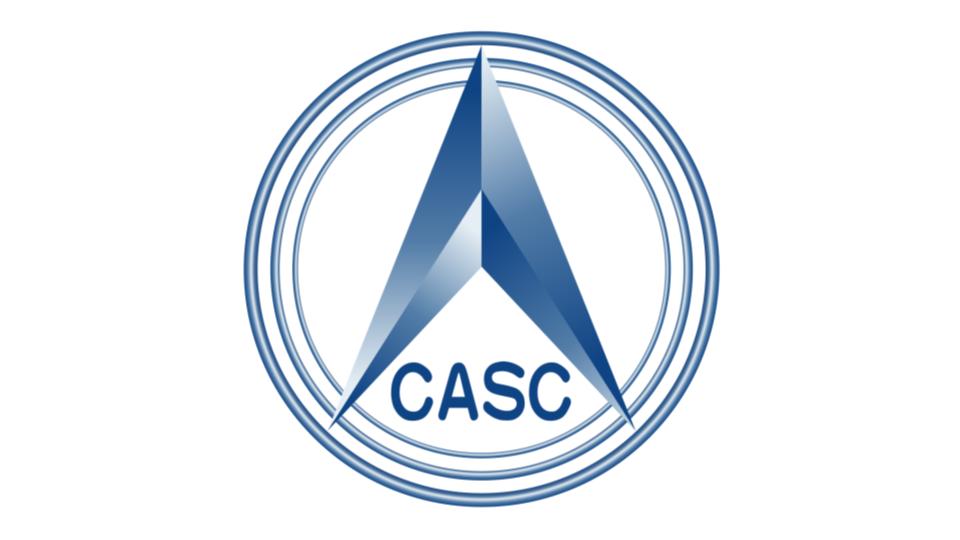
Starting off this week of rockets was a Long March 2D rocket with the Jilin-1 mission. Liftoff was on January 15, 2020 at 2:46 AM (UTC). On board were four passengers: a satellite destined for the Jilin-1 constellation, ÑuSats 7 and 8 from Satellogic, and Tianqi-5.
- Jilin-1 (RocketLaunch Live) https://www.rocketlaunch.live/launch/jilin-1-
- ÑuSat (Gunter’s Space Page) https://space.skyrocket.de/doc_sdat/nusat-1.htm
- Satellogic (Twitter) https://twitter.com/Satellogic/status/1206556951812943872
- Great Wall Signs New Contract with Satellogic (in Chinese, Aerospace Great Wall, WeChat) https://mp.weixin.qq.com/s/-A_3vcqsW76j8PQXPzOMfA
- Argentine smallsats hitch ride with Chinese payloads on Long March rocket (SpaceFlightNow) https://spaceflightnow.com/2020/01/15/argentine-satellites-hitch-ride-with-chinese-payloads-on-long-march-2d-rocket/
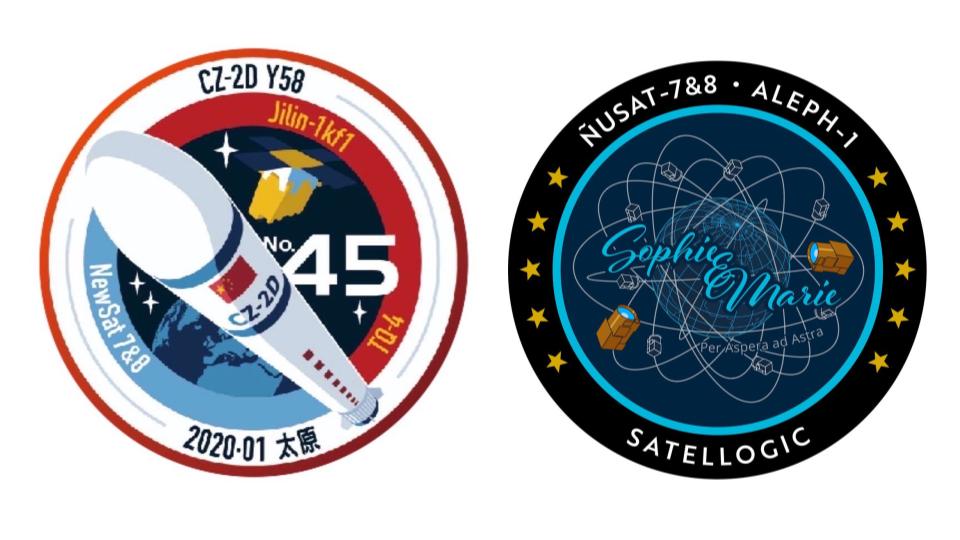
This launch had two mission patches! One patch is from China Aerospace Science and Technology Corporation, while the other is from Satellogic, the commercial partner.
The CASC patch (on the left) features the Long March 2D rocket cutting diagonally across the patch as if it were going to fly out at the viewer with the Earth far below it. The number “45” is prominently featured. Above the rocket is an artist’s rendition of the largest payload, the Jilin-1 Wideband-01 satellite. Four stars dot the background — one for each satellite onboard. The circular patch has two borders. The inner border is half light blue and half red. The light blue portion representing Argentina reads ÑuSat7 and 8 in white text while the red portion representing China reads reads Jilin-1kf1 and TQ-4 in yellow text. (I’m not sure why the second Chinese payload is marked on the patch as “TQ-4” when it is “Tianqi-5.”) The outer border contains the rocket identifier, and the month and year of launch.
The Satellogic patch (on the right) features a total of 10 satellites orbiting the Earth reminiscent of the Rutherford atomic model, if you squint just right. Two of the satellites are a bit larger and colored in, while the remaining eight are stick figures. Centered on the patch is the text “Sophie and Marie, Per Aspera ad Astra.” The border contains ten stars, the satellite names, the constellation name, and the company name. I’m fairly certain that ten satellites and ten stars represent Satellogic’s flock. Sophie and Marie are the nicknames for the two newest satellites, named after Sophie Germain and Marie Curie. Out of the two, Marie Curie is better known so I’m just going to remind you all that she and her husband did some groundbreaking research on radioactivity. Sophie Germain is less well-known. Sophie lived from 1776 to 1831 — a time when women of higher classes were educated enough to read, write, and be articulate enough to socialize at parties and to attract a good husband, but never to the extent where it would be a way to make a living as a scholar. So, when she was cooped up in her home during the French Revolution, she taught herself philosophy, mathematics, and physics. She’s best known for her work on Fermat’s Last Theorem. I don’t have time to get into her entire life story, so I encourage you to look up Sophie Germain when you get a chance.
Lastly, “Per Aspera ad Astra” is Latin for “through hardships to the stars.”
- Per aspera ad astra (Wikipedia) https://en.wikipedia.org/wiki/Per_aspera_ad_astra
- Sophie Germain (Wikipedia) https://en.wikipedia.org/wiki/Sophie_Germain

Some details on the satellites:
The Jilin-1 craft as well as ÑuSats 7 and 8 are all Earth-imaging satellites. Jilin is the largest of the three and was the primary payload. The ÑuSats are smaller and about 40kg each. The smallest satellite, Tianqi-5, is thought to be a six unit CubeSat weighing in at about 8kg. It also has a camera onboard but the primary mission is data collection and transmission.

Next up, on January 16th at 3:02 AM (UTC), a Chinese Kuaizhou 1A rocket launched the YinHe-1 mission.
- YinHe-1 (RocketLaunch Live) https://www.rocketlaunch.live/launch/yinhe-1
- Kuaizhou-1A lofts Yinhe-1 for China (NASA Space Flight) https://www.nasaspaceflight.com/2020/01/kuaizhou-1a-yinhe-1-china/
- Yinhe 1 (Gunter’s Space Page) https://space.skyrocket.de/doc_sdat/yinhe-1.htm
- GalaxySpace http://www.yinhe.ht/indexEn.html
- Launch media: https://twitter.com/LaunchStuff/status/1217673186151739392

This is a technology demonstration for a Chinese company called GalaxySpace, whose goal is to have a Low Earth Orbit constellation that can provide global coverage for 5G communication networks with a focus on rural areas. The company plans on having a constellation of up to 1000 satellites. For those of you worried about 1000 dead satellites in orbit: these satellites will be able to automatically de-orbit themselves and burn up in the atmosphere.
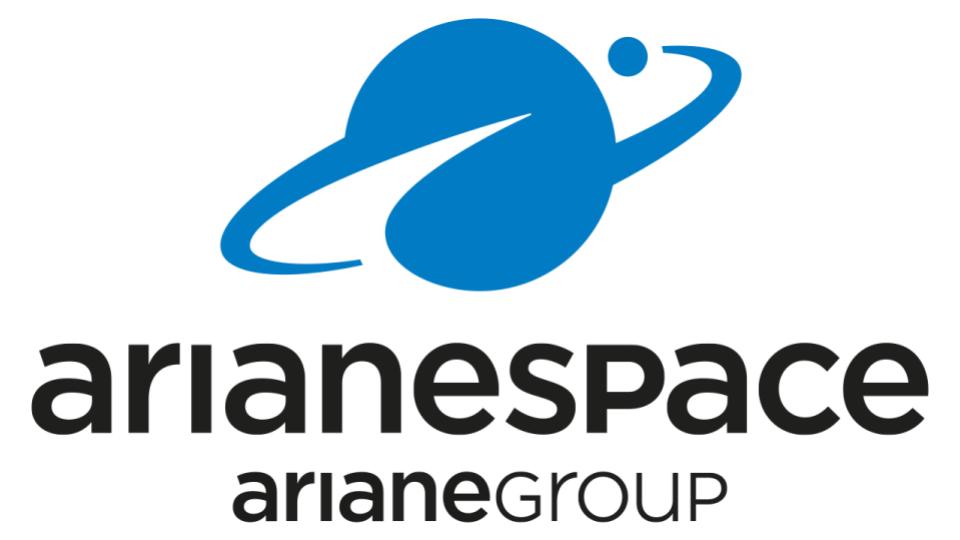
The last orbital launch of the week was an Ariane 5 on January 16, 2020 at 9:05 PM (UTC), carrying two commsats with a combined mass of over six metric tons.
- Eutelsat KONNECT (RocketLaunch Live) https://www.rocketlaunch.live/launch/va-251
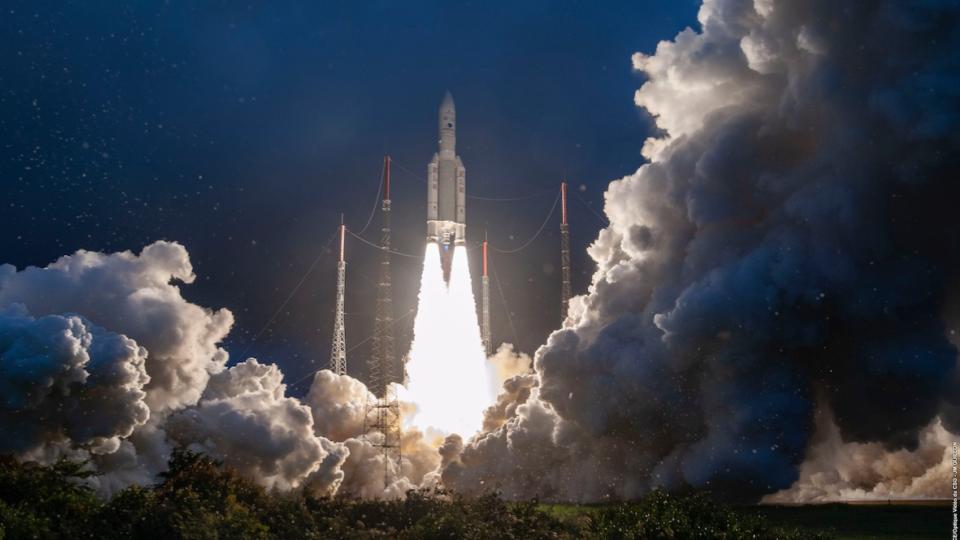
Credit: ESA/CNES/Arianespace – Photo Optique Video du CSG – JM Guillon
On board were Eutelsat Konnect and GSAT-30.
Eutelsat Konnect is part of Eutelsat’s ongoing project to expand broadband services in Africa. In addition to providing internet through community WiFi hotspots, it will expand mobile services in 40 countries on the continent, as well as 15 countries in Europe. It will operate primarily in the Ka-band, which is very sensitive to weather conditions but offers much greater available bandwidth than the usual Ku-band frequency range. The satellite is the first to be launched which uses the new NEO satellite bus developed by Thales Alenia Space with funding from ESA and from the French government. It features an all-electric xenon propulsion system which is extremely efficient and lighter than other propulsion systems. The trade off is that it has low thrust. Because of this, the satellite will take months to reach its intended orbit, but will be able to maintain that orbit for decades.
GSAT-30 will provide internet and television services for India. It is replacing INSAT-4A, which was sent to a graveyard orbit in October of last year. Like the INSAT it is replacing, GSAT-30 was designed and built by Indian Space Research Organisation. It will utilize 12 Ku-band & 12 weather resistant C-band transponders to provide communications to customers from Australia to Europe from its orbital position at 83 E longitude above the equator.
- INSAT 4A, 4B (Gunter’s Space Page) https://space.skyrocket.de/doc_sdat/insat-4a.htm
- Eutelsat Konnect (Gunter’s Space Page) https://space.skyrocket.de/doc_sdat/eutelsat-konnect.htm
- Ariane 5 orbits two satellites to “bridge the digital divide” on Arianespace’s first flight of the year (Arianespace) https://www.arianespace.com/mission-update/va251-ariane-5-success/
- Arianespace opens busy year with successful Ariane 5 launch (Spaceflight Now) https://spaceflightnow.com/2020/01/16/arianespace-opens-busy-year-with-successful-ariane-5-launch/
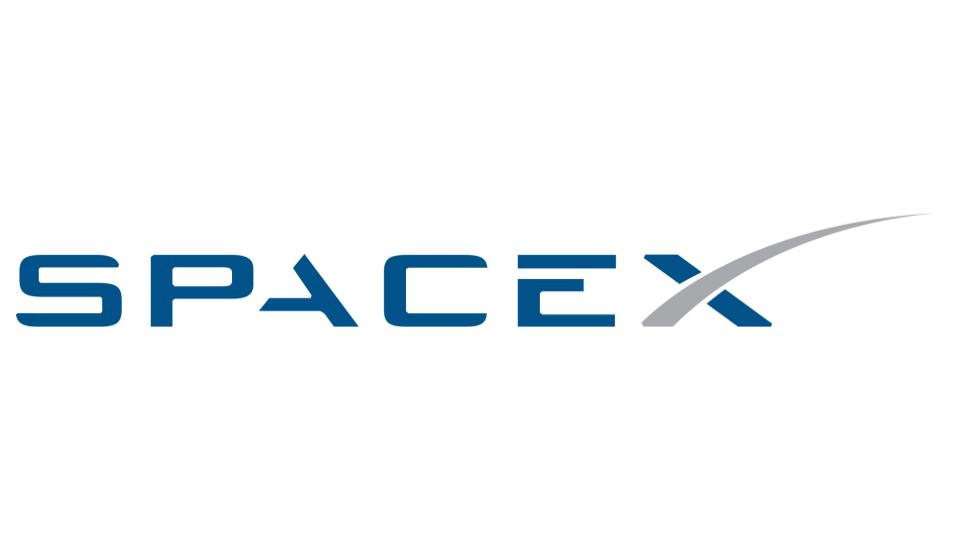
And even though it’s not an orbital launch, I know y’all aren’t going to let me get away without talking about it.
SpaceX’s uncrewed In-Flight Abort Test on January 19th was successful, and spectacular.
First stage booster B1046, the first of the Block 5 Falcon 9 first stage cores produced, lofted a Crew Dragon capsule into the sky at 10:30 a.m. EST (1530 GMT) Sunday. This booster had already been launched AND LANDED three different times, and was the only Falcon 9 booster to launch from all three of SpaceX’s working launch sites: “Slick Four” (SLC-4) at Vandenberg AFB, California; SLC-39A at Kennedy Space Center; and SLC-40 at Cape Canaveral AFS, Florida.
- Crew Dragon In-Flight Abort Test (Suborbital) (RocketLauch.Live) https://www.rocketlaunch.live/launch/crew-dragon-in-fligh
- SpaceX reaches parachute testing milestone (SpaceNews) https://spacenews.com/spacex-reaches-parachute-testing-milestone/
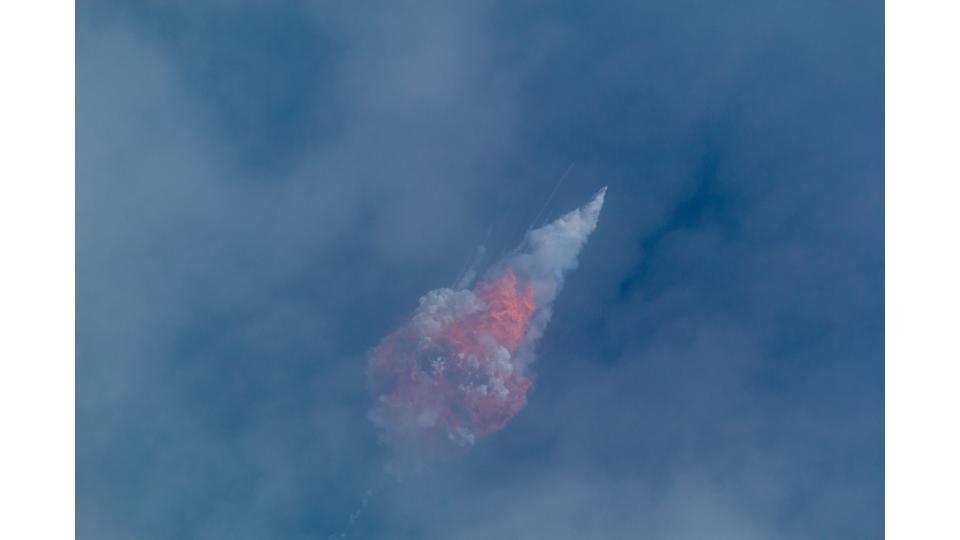
Gathering dust in a museum or on the company lawn was not in the cards for this workhorse booster. Instead, it went out in a blaze of glory. They already knew that the event was likely to be fatal for the lower stage, so SpaceX took the opportunity to get structural data from the failure that couldn’t otherwise be obtained through simulation or lab testing. In order to do so, SpaceX deliberately safed, or essentially turned off, the Automatic Flight Termination System shortly after launch. Why? The AFTS essentially acts like a pyrotechnic zipper to “unzip” the side of the rocket all the way from bottom to top, allowing all the propellant & oxidizers to mix. Which, of course, makes the rocket explode. So the bright fireball seen shortly after the Super Draco engines sped the Dragon to safety was not the result of someone pushing “the Big Red Button,” but instead was the result of aerodynamic forces on the rocket body itself.
Confirmation of this can be seen in the photos and video footage taken of the upper stage as it made it all the way to the ocean surface after the break up. Had the AFTS engaged, the 2nd stage would also have been detonated at altitude, but instead it impacted the ocean at just over Mach 1 which caused the 100 tons of RP-1 and liquid oxygen onboard to produce a second impressive fireball in the process.
The Crew Dragon itself attained speeds around Mach 2.2, a maximum altitude of about 40 km / 131,000 feet, and landed safely under it’s 4 fully deployed parachutes about 32 km / 20 miles out into the Atlantic Ocean. The capsule is already undergoing review and testing back on land.
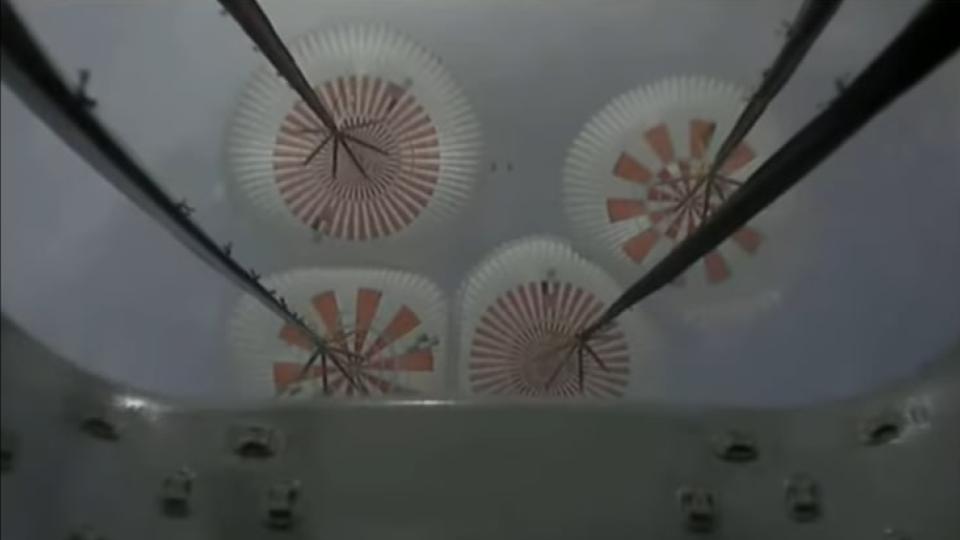
So when might Crew Dragon fly with an actual crew? That depends on a few things:
Apparently testing isn’t completely done yet on the new Mark 3 parachutes that the craft relies on during landing. In earlier parachute testing involving the Mark 2 chutes, SpaceX found that engineering data that they’d received from NASA had made false assumptions regarding the stresses faced by parachutes during deployment. Using the new data recovered during Mark 2 testing, and in full consultation with NASA Administrator Jim Bridenstine, SpaceX decided to make a new Mark 3 chute incorporating this data. Ten successful high altitude drop tests were performed prior to the Crew Dragons IFA test, but NASA wanted a few more before certifying the new design for crewed flight.
The IFA test flight counts as one, and two others are scheduled for mid-February.
During a post-test press conference, Bridenstine said, “Make no mistake, there’s a lot left to do. We have a number of parachute tests upcoming, and of course, we’re going to get a lot of data from this particular test. So we’re not quite there yet, but by all accounts, this was a very successful test.”
Kathy Lueders, NASA’s commercial crew program manager, struck an even more optimistic note suggesting Friday that the Demo-2 mission might be ready for launch as soon as the first half of March. Elon Musk himself announced that while the first crewed launch won’t likely happen until the 2nd Quarter (Apr – Jun) of this year, the hardware would likely be ready no later than the beginning of March.
However, even if all the data and the remaining parachute tests go smoothly, there is still the space station’s busy schedule to consider. That and ISS crew complement concerns will likely push the flight out to April 2020 or so, when only three people are scheduled to be aboard the station.
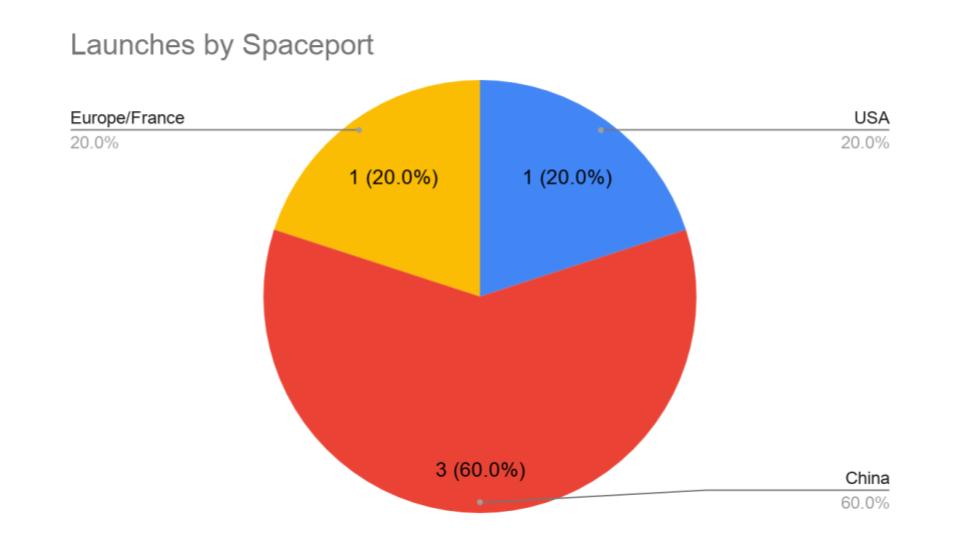
And here’s a running tally of a few spaceflight statistics for the year:
- Toilets burned up: 0
- Total satellites: 68
- Total launches: 5
- China: 3
- USA: 1
- France: 1


 We record most shows live, on Twitch. Follow us today to get alerts when we go live.
We record most shows live, on Twitch. Follow us today to get alerts when we go live.